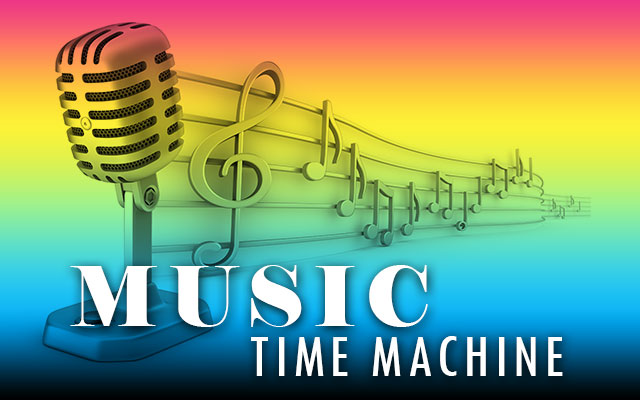Music has the remarkable ability to transport us back in time, unlocking memories, emotions, and moments that we may not have thought about in years.
Whether it’s a song from a high school dance, a tune that played in the background of family gatherings, or a track that was popular during a significant time in life, music carries a powerful connection to our past.
This connection to the music of our younger years is more than just a fond memory—it’s rooted in nostalgia. But why do we crave these sounds of yesteryear, and how does nostalgia make us gravitate towards the music we grew up with?
Music as a Time Machine

Music has a unique ability to act as a kind of time machine. A single song can evoke the sights, sounds, and even smells of a particular moment in our lives.
Neuroscientists suggest that this is because music engages a range of brain areas tied to memory, emotion, and even motor responses.
When we hear a song that we haven’t listened to in years, our brain rapidly retrieves memories associated with it, bringing past experiences vividly back to life.
It’s not uncommon for people to hear a song from their childhood or teenage years and suddenly feel the same emotions they did when they first heard it.
Whether it’s joy, excitement, sadness, or nostalgia, these feelings are triggered by the music, making it a powerful link to our personal history.
This is why so many people seek out old music or attend concerts that play hits from their past—it’s a way to relive those moments and recapture the emotions tied to them.
Why We Long for the Past
Nostalgia in music often comes at key points in life, especially during times of change or uncertainty. When the present feels stressful or the future seems unclear, people often find comfort in revisiting the past.
Music from earlier years can serve as a reminder of simpler, happier times. It’s no coincidence that many of us seek out “oldies” or throwback playlists during difficult moments in our lives, whether it’s the stresses of adulthood or the rapid changes in society.
In a world that is increasingly fast-paced and dominated by ever-evolving technology, the familiarity of past music provides a sense of stability.
The songs we grew up with represent a constant—something we can always return to, no matter how much the world around us changes.
These tunes act as emotional anchors, helping us feel grounded and connected to a part of ourselves that might feel distant in a busy, modern life.
The Soundtrack of Our Youth
The music of our youth holds a particularly special place in our hearts. Research has shown that the music we listen to during adolescence and early adulthood leaves the strongest imprint on us.
This is because our brains are especially sensitive during this developmental period, meaning the experiences and emotions we have are amplified. As a result, songs that were popular when we were teenagers or young adults tend to remain our favorites throughout life.
This is why people in their 30s, 40s, and beyond often gravitate towards music from their younger years. Even as new music emerges, the tunes from that formative period remain unmatched in their emotional significance.
Listening to these songs takes us back to the defining moments of our youth, whether it’s the thrill of a first love, the freedom of summer vacations, or the friendships we made in school. These tracks form the soundtrack of our lives and are deeply intertwined with who we are.
Why New Audiences Love Old Sounds

Interestingly, the power of nostalgia in music isn’t limited to just those who lived through a particular era. Younger audiences are increasingly discovering and falling in love with older music, even if it predates them.
The rise of streaming services has made it easier than ever for people to access songs from the past, and many younger listeners are finding a deep appreciation for genres like classic rock, Motown, swing, and jazz.
Groups like Postmodern Jukebox have tapped into this love for vintage sounds by creatively reimagining modern pop hits in styles from the past.
By blending the familiarity of contemporary songs with the charm of old-school genres, they introduce younger audiences to music that feels both fresh and nostalgic.
This approach shows that the appeal of music from the past isn’t just about personal nostalgia—it’s also about the timeless quality of certain sounds that resonate across generations.
The Timeless Appeal of Classic Songs
What makes the sounds of the past so appealing to listeners, both young and old, is their timelessness.
Many of the songs that we consider classics today have endured for decades, proving their lasting power.
The melodies, harmonies, and lyrics of these songs often capture universal themes—love, heartbreak, joy, and resilience—that continue to resonate with people today.
While music styles and production techniques may change, the emotions behind the songs remain relatable.
That’s why a song like “What a Wonderful World” can still move listeners in 2024, just as it did when it was first released in 1967.
These timeless songs have a way of transcending generational boundaries, allowing them to speak to listeners no matter when they were born.
Conclusion: Nostalgia as a Musical Connection

The power of nostalgia in music lies in its ability to connect us to our past while offering comfort in the present. Whether it’s through revisiting the soundtrack of our youth or discovering old sounds for the first time, music has a way of helping us feel grounded and emotionally connected.
As more people continue to seek out these nostalgic tunes, the influence of the past on today’s musical landscape will likely remain strong for years to come.
From classic hits to the vintage-inspired performances of Postmodern Jukebox, the sounds of yesteryear continue to capture our hearts in ways that are both timeless and profoundly human.
